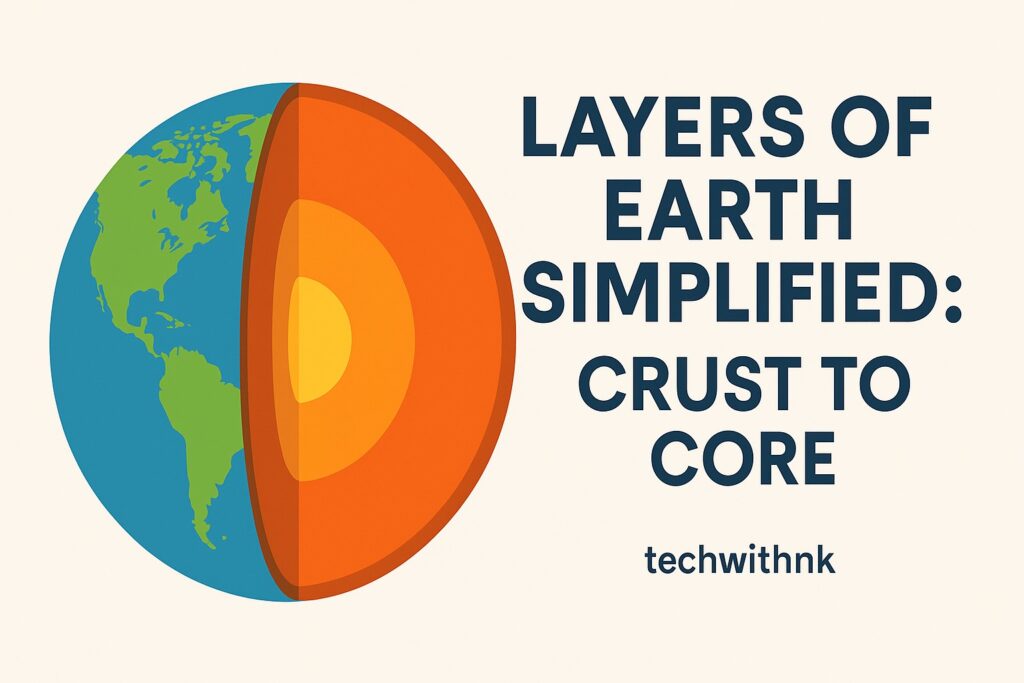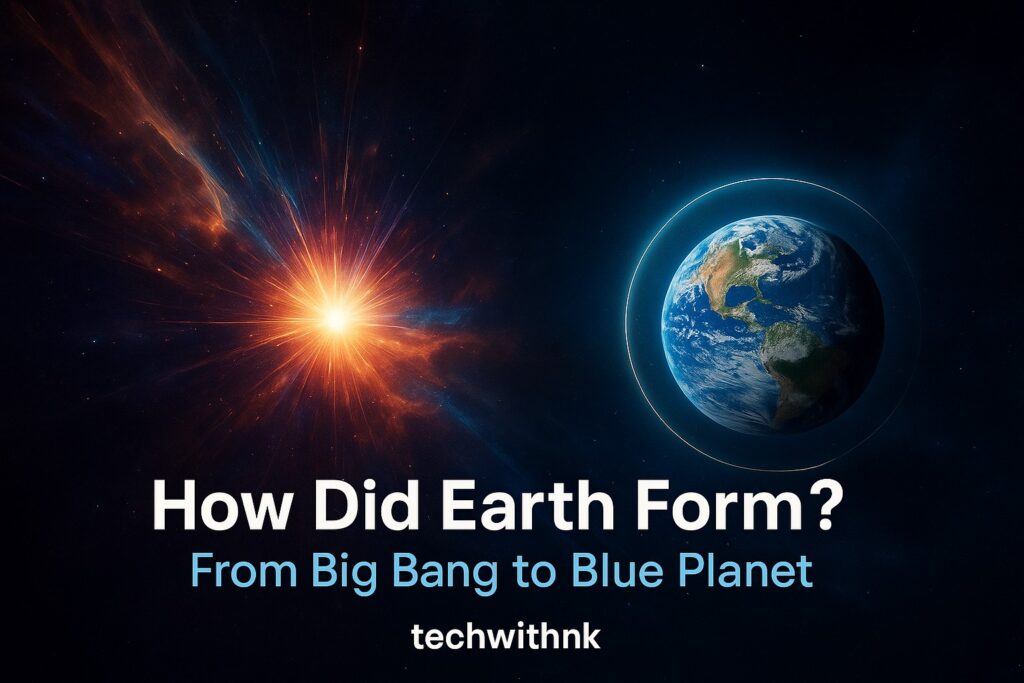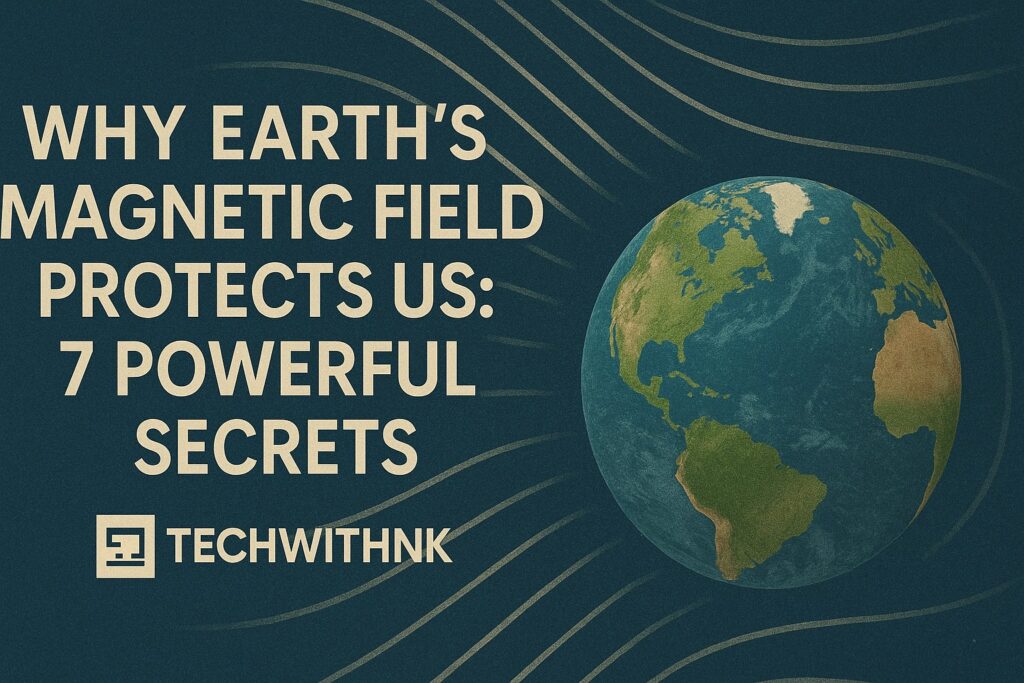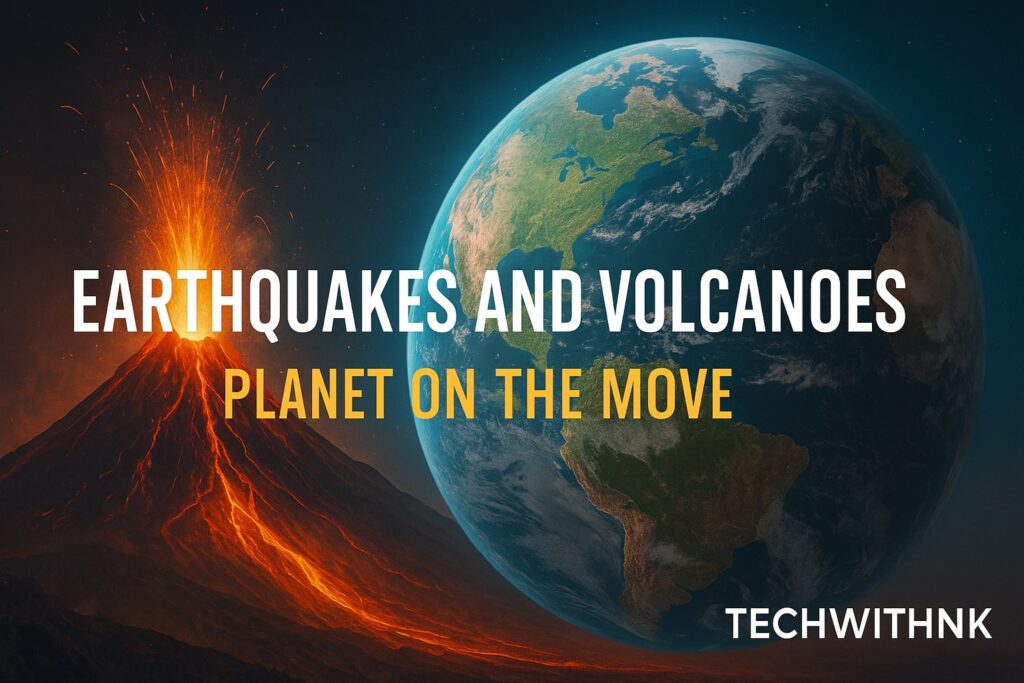Table of Contents
ToggleIntroduction to Layers of Earth
Earth is our home, but have you ever wondered what lies beneath your feet? Our planet is like a giant cosmic onion, made of layers stacked on top of each other, each with unique features and roles in keeping Earth alive and dynamic. From the solid crust where we live, down to the fiery, dense inner core, these layers reveal a story of our planet’s 4.5-billion-year evolution.
In this detailed guide, let’s explore each layer of the Earth, its structure, composition, function, and the mind-blowing facts that make our planet truly one of a kind.
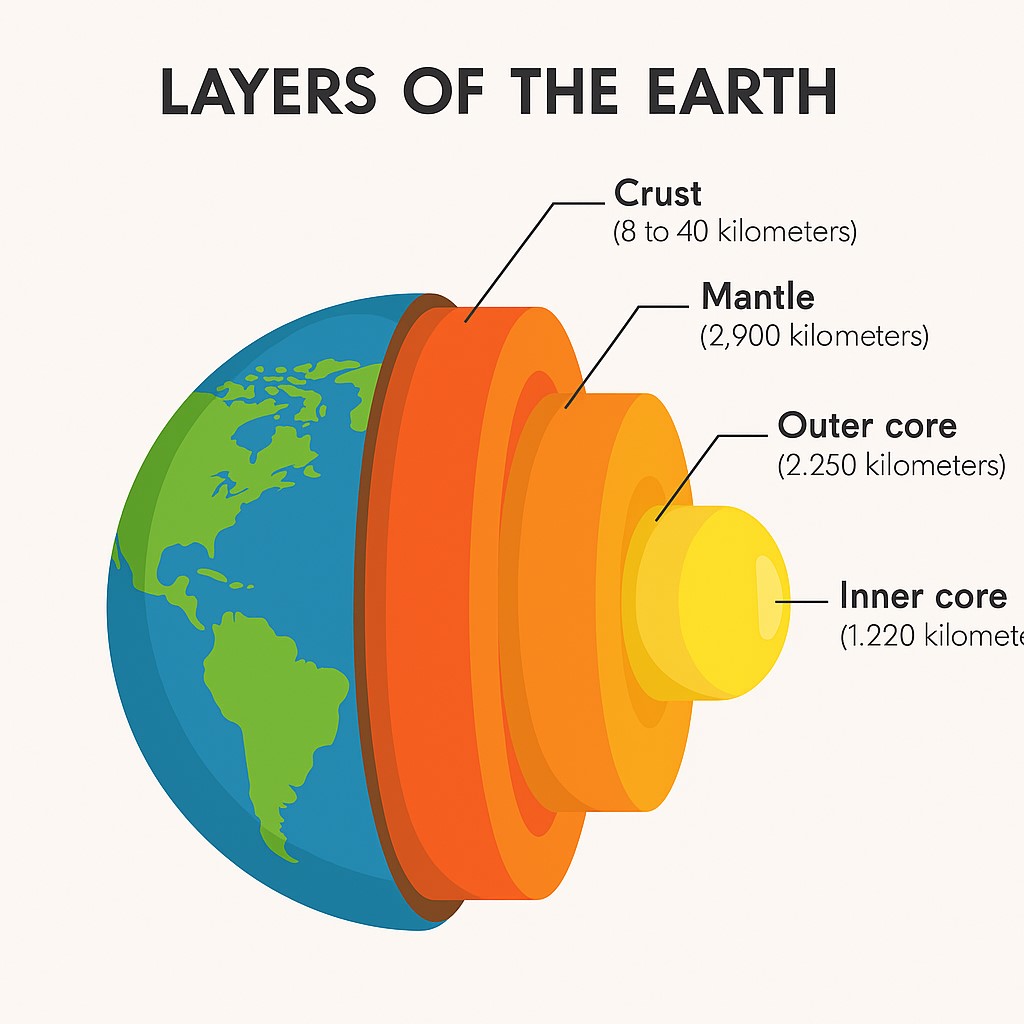
🌍 The Crust: Earth’s Thin Outer Shell
The crust is the outermost and thinnest layer of the Earth, and it is where all life exists. It forms the continents and the ocean floors. If you compared the Earth to an apple, the crust would be as thin as the skin. Despite being so thin, it is the most familiar and vital layer to us.
Composition of the Crust
- Made mostly of igneous, metamorphic, and sedimentary rocks
- Continental crust: largely granite-type rocks
- Oceanic crust: mostly basaltic rocks, denser than continental crust
Structure of the Crust
- Varies in thickness: about 5–10 km under oceans (oceanic crust) and 30–70 km under continents (continental crust)
- Broken into large pieces called tectonic plates
Importance of the Crust
- Supports all terrestrial life
- Contains the soil, water bodies, and ecosystems
- Provides minerals, resources, and fossil fuels crucial for human civilization
- Forms the rigid plates that move, causing earthquakes and mountain building
Interesting Facts
The oldest continental crust is around 4 billion years old.
Oceanic crust is younger (less than 200 million years old) because it is constantly renewed by seafloor spreading.
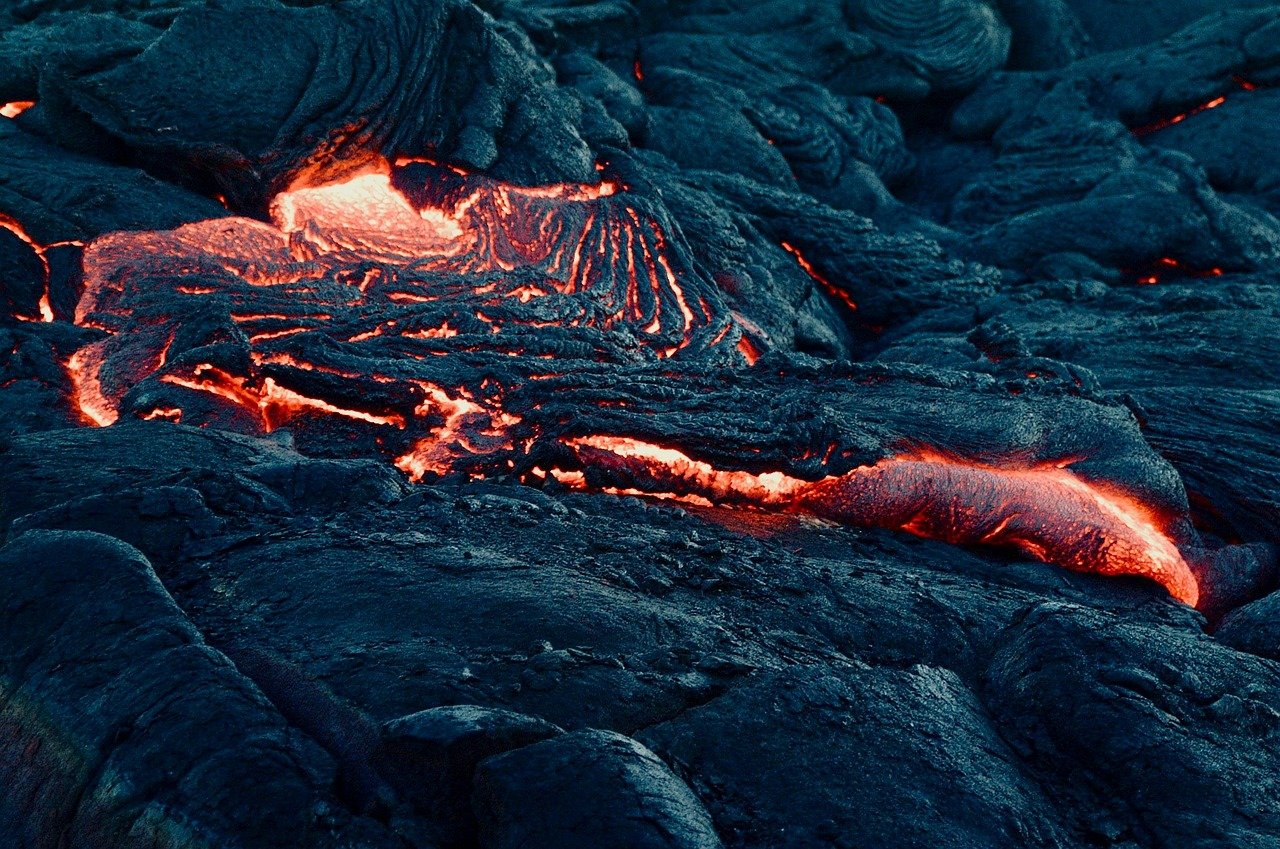
🪨 The Mantle: Dynamic Middle Layer
Beneath the crust lies the mantle, a thick rocky layer that extends roughly from 30 km down to about 2,900 km. It accounts for about 84% of the Earth’s total volume, making it the planet’s largest layer.
Composition of the Mantle
- Silicate rocks rich in magnesium and iron
- Composed of minerals such as olivine, pyroxenes, and garnet
- Overall denser than the crust
Structure of the Mantle
The mantle itself is divided into two sublayers:
Upper mantle (including the asthenosphere):
From 30 km to ~660 km depth
Partially molten and behaves plastically
Convection currents occur here, allowing plates to move
Lower mantle:
From ~660 km to 2,900 km
Hotter, under more pressure, and behaves more rigidly than the upper mantle
Importance of the Mantle
Responsible for plate tectonics through slow convection currents
Drives volcanic activity and earthquakes
Plays a role in the carbon cycle by moving materials between the crust and the deep Earth
Interesting Facts
The temperature in the mantle ranges from 500°C near the crust to over 4,000°C near the core.
Even though it is mostly solid, the mantle can flow very slowly over millions of years — a property called solid-state creep.
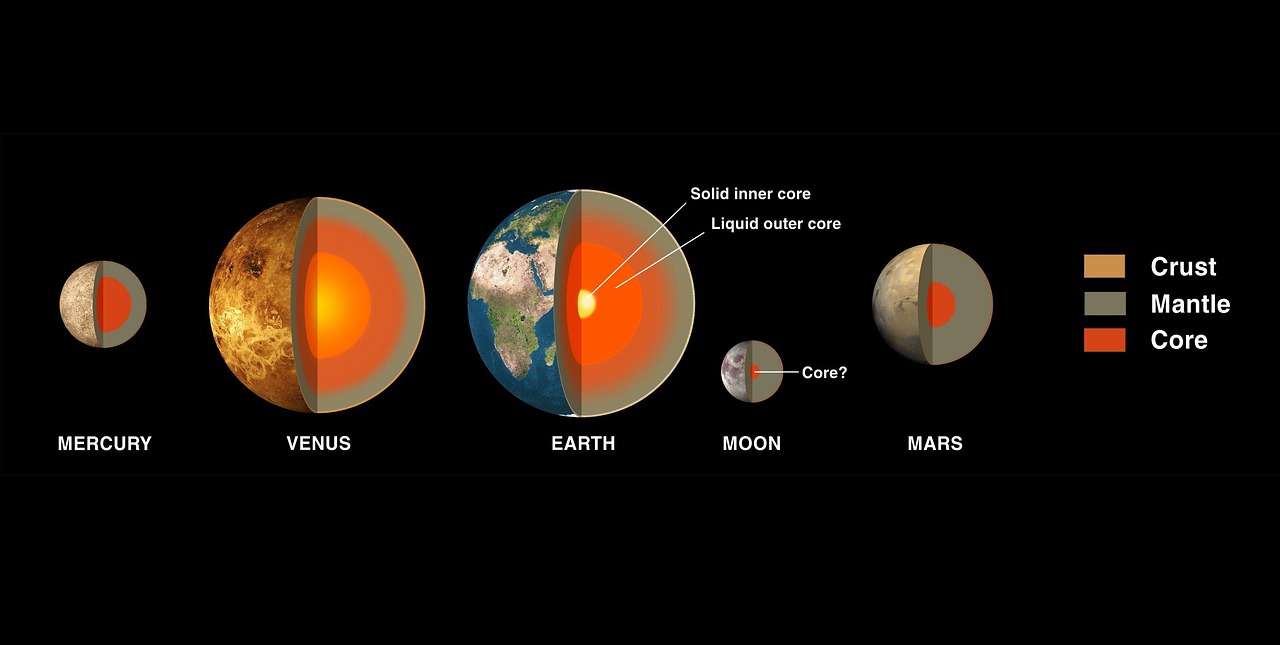
🌊 The Outer Core: Liquid Metal Dynamo
Below the mantle lies the outer core, a truly unique part of Earth. Unlike the solid layers above, the outer core is entirely liquid, extending from about 2,900 km to 5,150 km below the surface.
Composition of the Outer Core
Molten iron (mostly)
Some nickel
Trace amounts of lighter elements like sulfur or oxygen
Structure of the Outer Core
Thickness: about 2,200 km
Density: 9,900–12,200 kg/m³
Temperatures between 4,000–6,000°C
Stays liquid due to lower pressure compared to the inner core
Importance of the Outer Core
Generates Earth’s magnetic field through the movement of molten iron (known as the geodynamo effect)
The magnetic field shields Earth from harmful solar and cosmic radiation, making life possible
Influences compass navigation and migratory patterns of animals
Interesting Facts
The outer core’s swirling metals rotate faster than the surface of the planet.
Without the outer core, Earth would not have a magnetic field, leaving us exposed to deadly solar winds.
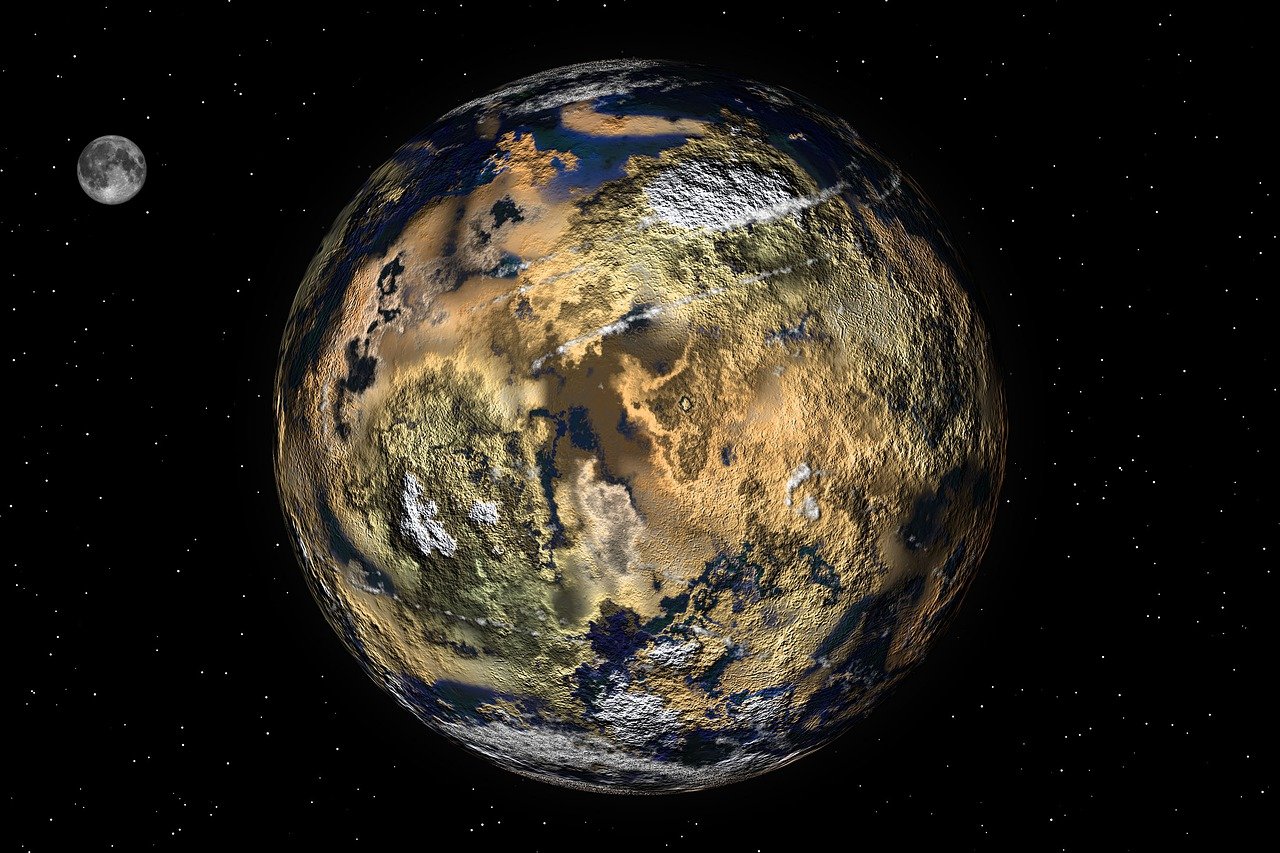
🔥 The Inner Core: Solid Metal Heart
At the very center of our planet is the inner core, a solid sphere of iron and nickel with a radius of about 1,220 km. It starts at a depth of 5,150 km and extends to Earth’s center at 6,371 km.
Composition of the Inner Core
Predominantly iron
Small amounts of nickel
Possibly tiny amounts of lighter elements
Structure of the Inner Core
Solid due to immense pressure, even though the temperature rivals the Sun’s surface
Estimated temperature: around 5,400°C
Density: about 12,600–13,000 kg/m³
Importance of the Inner Core
Adds mechanical stability to Earth
Works with the outer core to maintain the magnetic field
Its slow rotation relative to the rest of the Earth may affect the length of a day over geological timescales
Interesting Facts
Some scientists think the inner core may rotate slightly faster than the mantle and crust.
The inner core is slowly growing as the outer core solidifies over time, releasing heat and helping to sustain Earth’s magnetic field.
🌐 The Big Picture: Why These Layers Matter
Understanding Earth’s layers is not just about curiosity — it is crucial for practical reasons.
✅ Earthquakes: Seismic waves travel differently through each layer, helping scientists pinpoint earthquake epicenters and study Earth’s structure.
✅ Volcanoes: The mantle and crust interactions drive volcanic eruptions, which recycle gases and minerals vital for life.
✅ Magnetic Shield: The outer core’s motion creates a protective magnetic bubble, allowing life to survive harsh space radiation.
✅ Tectonics: The movement of the crust atop the flowing mantle creates continents, mountains, oceans, and earthquakes, literally shaping Earth’s surface over millions of years.
✅ Resources: The crust and upper mantle hold metals, minerals, and fossil fuels that are essential for modern society.
Final Thoughts
Earth is far more than what we see on its surface. From the rocky crust to the deep, scorching inner core, each layer has a story to tell about how our planet evolved and why it remains habitable. By understanding these layers, we can better predict earthquakes, harness resources responsibly, and protect life on Earth for generations to come.
Which layer is the thickest?
The mantle is the thickest, making up about 84% of Earth’s total volume.
Why is the inner core solid while the outer core is liquid?
The inner core is under much higher pressure, forcing it to stay solid despite the extreme heat, while the outer core has less pressure and stays molten.
What causes Earth’s magnetic field?
The flowing molten iron and nickel in the outer core generate electric currents, which produce Earth’s magnetic field.

